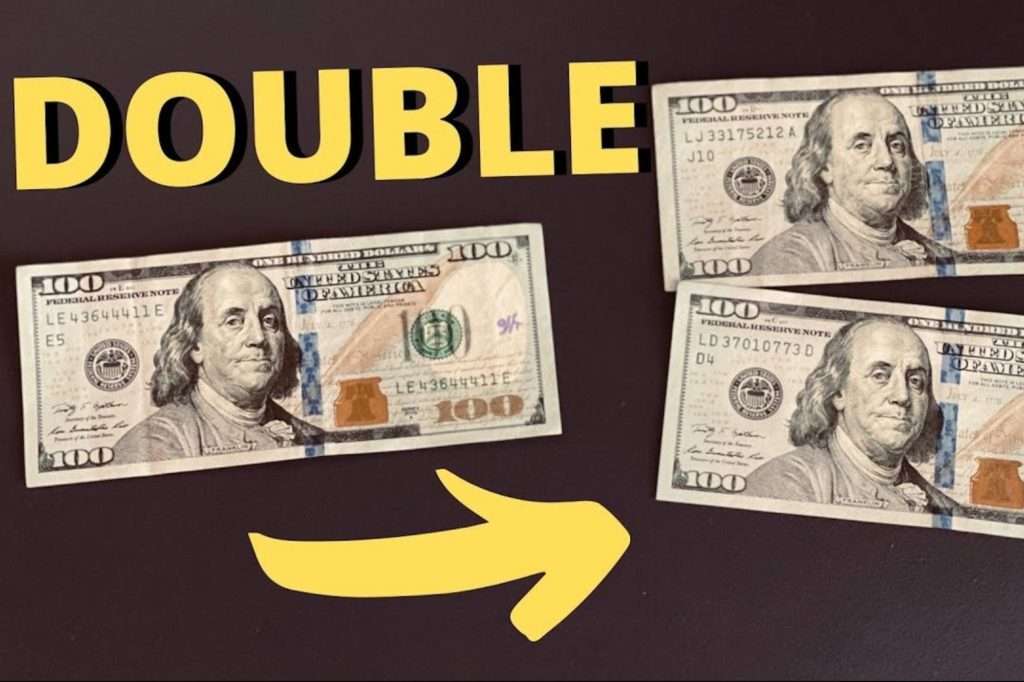Most people dream about quitting their jobs and starting a successful Forex trading career. If you are wondering whether $100 is enough to get you started, I am here to say it is enough! Yes, you can become a profitable day trader with just $100.
Learn the Secret of Forex Trading, Click here to download a free e-book now
Most beginners would want to test the financial markets with a little capital. Well, brokers listened and waivered their minimum deposit requirements. Today you can start your trading career with just $100 and become profitable. A trusted broker like Deriv gives you a leverage of starting a trading career with $10 or even less.
See below a result from a $11.91 capital of a trader who is using Deriv.
Don’t be left out, Open a free trading account now by clicking here
Trading with a small account has both its advantages and disadvantages. In this article, I will guide you on how to become a Profitable day trader with Just $100
Table of Contents
What is day trading?
Day trading is basically buying and selling stock within the same day. Day traders often have to open and close many positions to make substantial profits. There is a difference between day traders and active traders who may hold a position for multiple days. Day traders take advantage of leverage to increase their potential profit.
So, can you become a profitable day trader with just $100? Well, yes, you can. However, you need to work out a proper strategy to use and find the right broker. However, trading with a small equity is risky; for this reason, you should conduct a lot of research before making the decision.
How to become a Profitable day trader with Just $100
Before becoming a day trader, there are certain things we have to consider first, such as finding the right broker, choosing the securities to trade, coming up with a strategy, and how to go about your first trade.
Find the right broker.
Finding the right broker is crucial if you are going to start trading with $100. The ideal broker should meet these requirements;
- Charges- find a broker that charges from spreads rather than commissions. Spreads are charged according to the amount you trade. Brokers that charge a commission tend to have a minimum charge, and we can’t afford to lose money on every trade we conduct.
- Minimum deposit- the ideal broker should allow a minimum deposit of $100 or less; otherwise, it would be pointless.
- Leverage and margin- as a day trader who is opening many short positions throughout the day, choose a trader with big leverage and margin.
Choose securities.
As a trader with a small account, the goal is to make high gains on the trades we make; otherwise, your account is likely to grow very slowly. For this reason, go for securities indicating higher levels of volatility.
If you are trading forex, aim to keep costs and fees low. Go for popular forex pairs such as EUR/USD, GBP/USD, USD/JPY, AUD/USD, NZD/USD, and USD/CAD. These currency pairs have the lowest spread and are very volatile. If you are trading synthetic indices; Boom 500, Boom 1000, Crash 500, Crash 1000, Volatility 75 can give you a great return on your investment.
Choose your strategy.
When you are deciding your strategy, decide on what time of the day to trade, the amount to use in every trade, conditions to be met to open a trade, risk management, and trading exiting plan.
If you want to become a day trader with $100, start by settling on at least two strategies. However, these are not enough; the trading world is highly volatile, and you need to be as adaptive as possible. As your trading career grows, get to learn more strategies and customize, dump, or substitute your current strategy.
Read: The Best Forex Strategy for Small Accounts
Decide on when to trade.
For a day trader, the ideal time to trade is when the market is showing higher levels of volatility. A perfect time would be when the EUR/USD and the GBP/USD markets are both active. The demand and supply of the EUR, USD, and GBP make these markets fluctuate, making the market volatile. For synthetic indices like Boom and Crash, their spread are the same all over the day, just find a suitable trading time for analysis and trading
Amount per trade.
I would advise day traders with a small account to consider opting one large trade at a time, instead of having many small open trades. For instance, trade with 60% of your deposit, utilize leverage and have a chance to hit a single trade in a big way. Or, use two position with small lot size per trade (because of margin level).
When to enter and exit a trade
Your trading strategy should detail the conditions that must be met for you to enter a trade. Utilize technical indicators such as candle patterns, chart patterns, oscillators., volatility, momentum, and volume. These indicators are helpful in identifying trends and market conditions.
When placing a trade, be careful of the amount that you put at stake. If your account was comfortably bigger, it would be okay to risk up to 2% of your deposit. However, with your $100 account, it would be advisable to take higher risks because your loss is limited to what you have in your account.
Normally, I take a risk of 3% per trade; 3% per trade means $100*0.03=$3 for each deal. Utilize leverage to the fullest. For instance with a 50:1 leverage, you can trade up to 50*100= $5,000.
Using the same leverage, 60% of your deposit in a trade, equals $60*50= $3000 per trade. Set your stop loss at 0.1% distance away from the entry price. For example if you are buying EUR/USD at 1.1450, set your stop loss at 0.1% below the entry position.
Conclusion
Growing a $100 account needs consistency and much patience. When working with a 3:1 profit loss ratio, and a 3o% success rate, risking only 3% per trade to get $9, you will be making great profit in 10 trades. When making 7% profit in every 10 trades, your $100 account will have collected $80,000 in 1,000 trades.
If you want to become a day trader with $100, it would be best to fully concentrate on trading. Remember, the more you treat it like a professional job, the more it is likely to give you better result.
N/B: Trading is risk, risk responsibly.
All the best!
Deriv offers complex derivatives, such as options and contracts for difference (“CFDs”). These products may not be suitable for all clients, and trading them puts you at risk. Please make sure that you understand the following risks before trading Deriv products: a) you may lose some or all of the money you invest in the trade, b) if your trade involves currency conversion, exchange rates will affect your profit and loss. You should never trade with borrowed money or with money that you cannot afford to lose.

